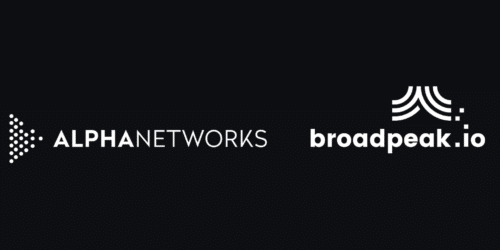“Advertising is big business, but how can TV service providers monetize their offerings to the fullest?” “Equally, how can a broadcasters ensure that they again become the go-to for premium ad campaigns?”
For TV service providers, this will largely be determined by the content rights the TV service providers succeed in obtaining. This section will take a closer look at the relationship between the different content rights — and a nation’s law — while also exploring the possibility to implement a TV monetization strategy.
Content Rights & Advertising
VOD Rights
The default license stipulates that pre-, mid- and post-roll commercials are not allowed. However, TV service providers in general can request the rights to combine the assets with commercials. Yet, this either translates into a substantially higher license cost or a requirement to implement some form of revenue share with the copyright holder.
Linear Rights
In the context of linear TV, we tend to talk about either retransmission or carriage rights. The associated agreements can optionally include advertisement availabilities or “ad avails” to which the TV service provider is granted the rights to monetize. In general, TV service providers are not allowed to insert or even replace the advertisements in the broadcasted signals they retransmit.
However, for example, in the U.S. it is becoming increasingly possible to obtain the rights to a limited set of the total ad slots available on a broadcast channel. In general, less than 15% is made available to the TV service provider, mostly for the insertion of local ads. This results in the U.S. broadcaster having 15 to 17 minutes of advertisements per running hour available for national, non-targeted advertising. The TV service provider has possibility to resell roughly two minutes every running hour for local and targeted advertisements.
The Law & Advertising
Most countries have laws that cover television and media. In general, these laws also have clauses that regulate TV advertisements. They put restrictions on both the length of commercial breaks, and on the content of the advertisements themselves.
For example, in Europe, advertising has been regulated via the Television Without Frontiers (TWF) Directive from 1989. The TWF Directive has the purpose of securing access for viewers and listeners in all member states to broadcasting signals emanating from any other member state and the harmonization of European Union broadcast advertising standards. The directive contains chapters devoted to the promotion of television program production and distribution, protection of minors, television advertising and sponsorship, and right of reply.
The TWF Directive (89/552/EEC, as amended by Directive 97/36/EC) allows nine minutes of commercials on average, with a maximum of 12 minutes in any given hour.
Some member states have stricter limits. For example, in France, all broadcast channels must carry at most six minutes of commercials on average, with a maximum of 12 minutes in any given hour. Additionally, the French decree in place since 1992 states that every French household must receive the same signal when watching live linear TV, and this includes advertising, effectively making targeted advertising illegal. In 2020 the French legislator finally released a decree allowing, amongst others, targeted advertising.
Ad Partnerships
Based on the above information, one could conclude that there is only a very limited role for TV service providers in TV advertisements as, in general, broadcasters remain in control of all or a substantial part of the ad slots.
However, broadcasters do require the help of the TV service providers to implement effective targeting, which is required to regain their position in the ad spend they lost over time to digital advertising.
Broadcasters could decide to implement targeted advertisements on their direct to consumer (D2C) offering. However, although growing, the number of subscribers tends to still be limited vs. the subscribers that can be reached through TV service providers that carry the channel.
Hence, there is an incentive to establish TV advertising partnerships between broadcasters and TV service providers, where the broadcaster contributes ad slots, and the TV service provider contributes having a prime relationship with the individual subscriber under the form of the collected first-party data. The TV service provider can propose an Ad platform for targeted advertising to broadcasters leveraging its vast subscriber base as illustrated here below.
Under European GDPR regulation, TV service providers can also provide an extensive set of first-party data (i.e., localization, CRM, TV consumption data, etc.) essential for implementing effective targeted advertising campaigns.
In this “win-win” setup the broadcaster uses its well-established direct sales force to sell the targeted advertisement capability as the market matures, we can also envision programmatic buying. The TV service provider enables the programmatic delivery/targeted ad delivery.
As a bonus, if the TV service provider has a catch-up TV or NPVR/RS-DVR service, it can offer additional ad slot monetization services to the broadcasters for subsequent playbacks by implementing ad replacement.
To illustrate this type of partnership, we can refer to France where all the main broadcasters (working under the SNPTV organization) and the main TV service provider (working under the AFMM organization) collaborate. Given the complex ecosystem, it is essential to define rules between the different actors. Both parties have worked closely together for over two years to define a common specification for SCTE-35-based signaling and for the complete ad platform. For example, it is essential for all the broadcasters in the country to insert SCTE-35 signaling in the exact same way in their broadcast signal. In addition, TV service providers should ensure that their platforms handle these signals in the same way.
This has resulted in French Broadcasters selling targeted Ad slots for an average of about 22€ CPM and TV operators being able to get a 10% to 30% commission.
With the outlook to have 8,8 million homes enabled for targeted advertising by 2023, the forecasted targeted ad revenue for France is 95M€. Expected to reach 180M€ by 2026.
Scalable Ad Infrastructure
Beyond the technical challenge of signaling and performing a seamless switch on a linear TV channel, TV service providers will also need to manage and upgrade their infrastructure to be able to manage peaks of ad insertion/replacement requests because, in general, linear TV ad breaks tend to occur at about the same time. This is contrary to VOD, where you can have a huge number of concurrent playback streams, but where the ad replacements and insertions are more evenly spread out. During prime time, the ad request peak could be quite significant. In this case, it is critical to have a CDN infrastructure in place that has been scaled and optimized to deal with these peaks to guarantee the highest quality of experience (QoE) during ad breaks. Some TV service providers have so much targeted ad business revenue at stake that they implement a CDN dedicated to delivering the ad assets (ad CDN) to avoid regular asset caching negatively impacting the ad delivery.
By the same token, during peak moments massive amounts of ad decisions need to be made. Consequently, the ad decisioning infrastructure — whether operated by the individual broadcasters or the TV service provider — will need to be able to deal with these simultaneous requests.
Conclusion
Beyond the technical challenges of implementing a targeted TV advertising solution there are content rights-related considerations and legal aspects to be addressed, too. Typically, the legal framework in most countries offers sufficient freedom to the content owners to monetize their content. However, they require the cooperation of TV service providers to be able to solidly implement targeted capabilities that will also be valued by advertisers. Hence, establishing advertising partnerships between content owners and/or broadcasters and TV service providers will be essential to fully exploit the potential enabled by connected TV advertising.
The Target TV Advertising Blog Post Series:
Digital Ad, DAI and SSAI – Part 1/5
The Crumbling Cookies – Part 3/5










